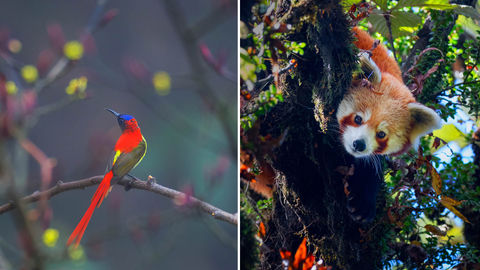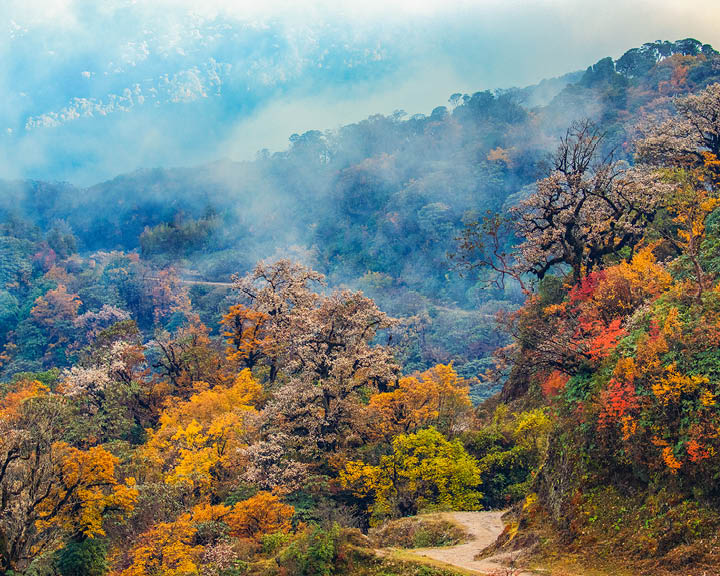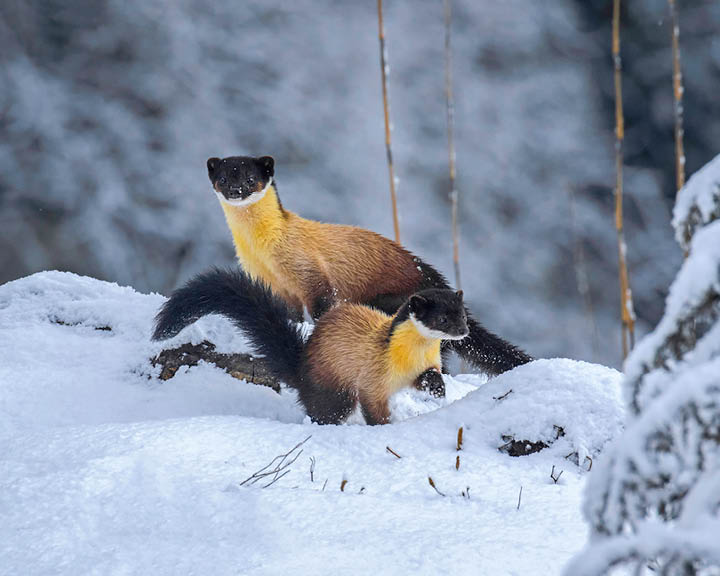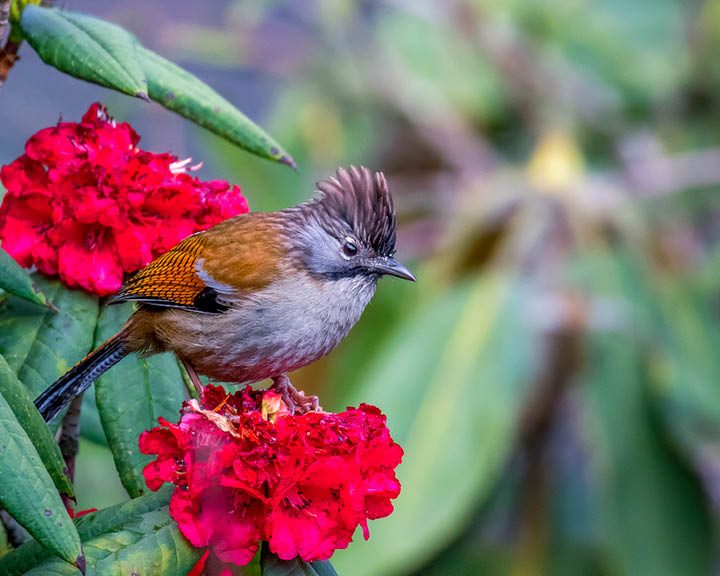
The forests of Singalila National Park in West Bengal are home to many elusive species. Biologist and wildlife photographer Sourav Mondal spent many months walking through these woods to photograph the endangered red panda and numerous other rare creatures. By Sourav Mondal

Singalila National Park is an eden nestled in the lap of Eastern Himalayas. Located on the Singalila ridge in the Darjeeling district of West Bengal, at an elevation of 3,000 metres above sea level, the area is blessed with subtropical forests and temperate coniferous forests. The vegetation includes oak, silver fir, maple, magnolia, bamboo, and 19 species of rhododendron, which bloom in spring and cover the valleys in a multi-coloured garb. The forests also have a wide variety of wild orchids and cobra lilies.

This unique location and wide variety of flora have made Singalila the favoured home for myriad animal species. Among those is the very special red panda, an endangered species found in few pockets of the Eastern Himalayas and China. Apart from the adorable tree dweller, the park harbours over 30 species of mammals, including the elusive clouded leopard, marbled cat, Asiatic black bear, musk deer, and Himalayan serow. The 200-plus bird species found here include satyr tragopan, blood pheasant, fire-tailed myzornis, red
crossbill, rosefinch, and fire-tailed sunbird.

As a biologist, I’m fascinated by red pandas. They are practically living fossils, and their evolutionary adaptations include a herbivorous diet (bamboo) in spite of being carnivores, a false thumb to hold on to bamboo branches, and special pits on the tongue to sense threats in the air. As a wildlife photographer, I love Himalayan terrain because the animals that live here are rarely found anywhere else in the world. Their behaviour and adaptation to these difficult forests also make them very hard to photograph. For instance, red pandas are solitary, shy, and arboreal. They sleep inside tree holes or on mossy branches of big trees. As they are crepuscular and nocturnal, they tend to rest through the day. Though they are vibrant in colour on the top, they can perfectly camouflage on moss trees and are extremely hard to spot in the wild. A clear view of a red panda in good daylight is a rare phenomenon. So far, I have had 65 sightings in the wild but just a handful of good frames.








Related: Here’s Why You Need To Visit West Bengal’s Favourite Hill Station Darjeeling In Winters










